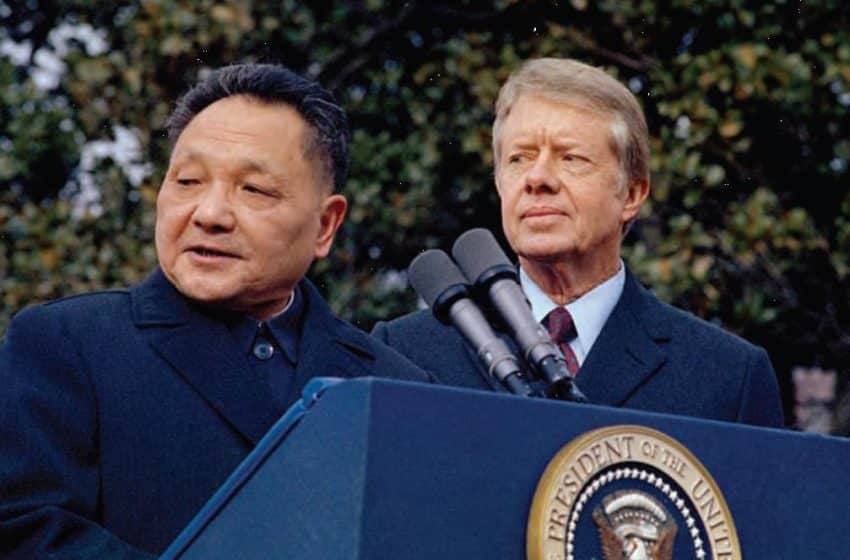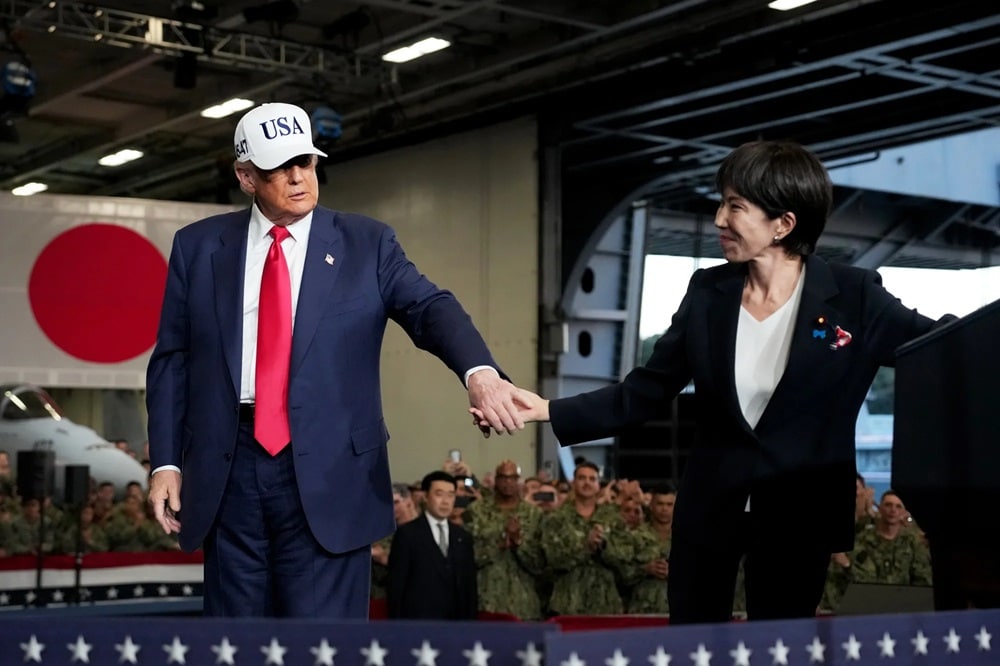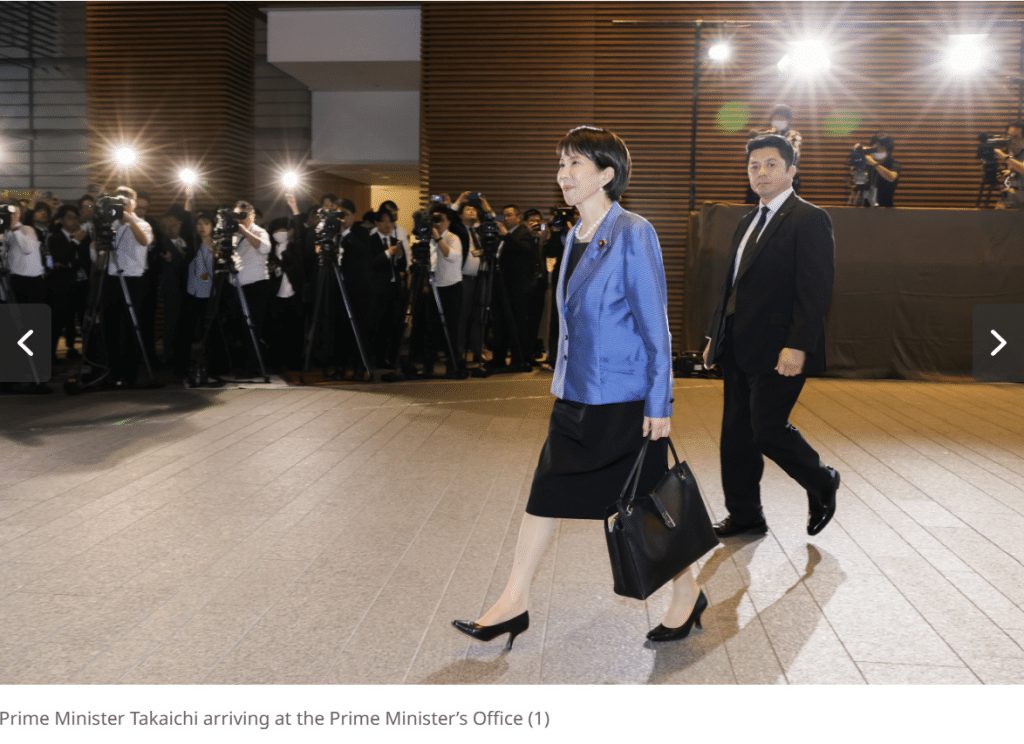Speaking With One Voice? The Bipartisan Consensus on China in the U.S. House of Representatives
“China policy” in the U.S. Congress has been increasingly described as “bipartisan” in recent years. Lawmakers across the aisle have introduced a large number of measures to counteract Beijing on multiple issues, such as human rights, the economy, military, and technology. When a China-specific bill is voted on the chamber floor, it usually receives unanimous support. The media claims that a hard line in dealing with China is “one of the few truly bipartisan sentiments in the deeply divided U.S. Congress”.
Take the China-specific bills that were enacted as laws in recent years. In 2020, a bill that imposes sanctions on individuals and entities responsible for human rights abuses in China’s Xinjiang Uyghur Autonomous region passed in the Senate unanimously and then passed in the House with only one dissenting vote (S.3744). Likewise, both chambers passed the Hong Kong Autonomy Act without objection in the same year, aiming to sanction persons contributing to China’s failure to preserve Hong Kong’s autonomy (H.R.7440). The passage of these two bills triggered strong condemnation from the Chinese government, which criticized the U.S. for violating international laws and interfering with Chinese internal affairs.
Even lawmakers themselves seem to buy into this claim that a consensus on China has emerged in Washington. Senate Majority Leader Chuck Schumer (D-NJ) said that “[o]n the China bill, we have good bipartisan support,” and his counterpart, Senate Minority Leader Mitch McConnell (R-KT), said, “[i]f any issue is ripe for a regular-order bipartisan process, it is this one (the China issue).” Senator Bernie Sanders (D-VT) warned that this new consensus is “distressing and dangerous” and it will “create a political environment in which the cooperation that the world desperately needs will be increasingly difficult to achieve.”
From roll-call votes to cosponsorship activities
However, this view ignores the fact that lawmakers introduce a large amount of China-related legislation in each congressional session, but only a tiny fraction of them make it to the chamber floor. What happens before the final stage is often hidden from public view. In addition, it is unclear if Democrats and Republicans prioritize the same issues when dealing with China. It is common that a bill introduced by a Democratic sponsor does not attract any cosponsors from the Republican party and vice versa. This partisan stage of the legislative process is startlingly different from what we observe in roll-call voting. For example, a concurrent resolution in the House (H.Con.Res.97) that aims to establish a joint committee to investigate China’s handling of Covid-19has 82 Republican cosponsors while no single Democrat joined the effort. Likewise, a Democrat’s proposed bill in the 116th Congress (H.R.3476) that requires the intelligence community to notify Congress upon discovering an individual in the executive branch has disclosed classified information to China and other foreign adversaries received no support from Republicans. Similar examples are abundant in Congress. In the meantime, other proposals receive a relatively equal number of cosponsors from both parties, indicating high bipartisanship on the issue. An example is H.Res.697 of the 116th Congress, which calls on the U.S. to increase support for Tibet in a number of areas. The bill attracted 17 Democratic and 16 Republican supporters.
In short, cosponsorship activities reveal a more complex picture of China policy in Congress than roll-call votes or individual lawmakers’ observation. In particular, scholars have found that compared with roll-call votes, cosponsorship is less constrained by party leaders and institutional rules and thus more likely to reflect the actual preferences of individual lawmakers. By only looking at roll-call votes, we risk missing a comprehensive understanding of policy disagreement within Congress. Focusing on bill cosponsorships, the question that my paper aims to answer is, why do some China-related bills receive more bipartisan support than others?
I theorize that the bipartisan support China-related bills receive is determined by two sets of factors: the sponsor factors and issue factors. I test my hypotheses based on an analysis of all China-related bills in the House introduced from 109th (2005-07) to 116th Congress (2019-21). The total number of observations is 422 (Bills dealing with budget, including authorization and appropriation bills, are excluded). Following previous scholars’ approach, I code bills as “bipartisan” if at least 20 percent of cosponsors are from the sponsor’s opposing party. My empirical findings indicate that both sets of factors contribute to the variation in bipartisan support that China-related bills receive.
Empirical findings
First, the sponsor of the China-related bill matters. The more extreme the sponsor’s ideology is, the less bipartisan support their China bill receives. Bills introduced by radical lawmakers may deviate more from the status quo, and lawmakers from the other party may not be interested in promoting such bills. Consider Rep. Chip Roy (R-TX), who is the third most conservative Republican lawmaker in the 116th Congress based on NOMINATE scores. He introduced two bills regarding China, with one about the Covid-19 pandemic and the other about transparency in Confucius institutes in the U.S. (H.R.6471- Dr. Li Wenliang Congressional Gold Medal Act and H.R.7138-Transparency for Confucius Institutes). These two bills attracted 18 and 13 Republican cosponsors, respectively, while neither had a single Democratic supporter. Ideologically extreme lawmakers face a more challenging time reaching colleagues from the other party, even on what seems to be a bipartisan topic.
I also find that although China-related bills are undoubtedly prominent in national security, the sponsor still needs to spend efforts promoting such bills. This is especially the case if members of Congress want to attract support across the aisle. The more intensely the sponsor pushes for their bill, the more cosponsors they get, and the more likely their bill receives support from the other party. Sponsors’ efforts not only matter for the bipartisan support bills receive but also for bills’ fate. For bills that have no cosponsors in my data, which to some extent indicates the sponsor did not spend much effort promoting the bill, none but one receive the committees’ attention. Why lawmakers decide to push for some bills but not others is beyond the scope of the paper. Future research should consider potential explanatory factors such as interest groups, party leaders, and lawmakers’ constituents.
For issue factors, I categorize all China-related bills into six groups: human rights and democracy promotion, economy, security, Taiwan, Covid-19, and others. I find that none of the issues identified in the paper generate more bipartisan support than other issues. In other words, all these issues witness partisan lines. For instance, in the 116th Congress, Republicans introduced 22 Covid-related bills, and 19 of them only have Republican cosponsors. The party line is evident in how the two parties frame the origin of the virus. Democrats stress that regardless of the origin, former President Trump’s mismanagement is responsible for the American loss. At the same time, Republicans advocate for a “man-made” theory, claiming that the virus leaks from a lab in Wuhan, China, and accusing Democrats of being too soft on the CCP.
Human rights and Taiwan bills do not seem to have the effect as expected. One possibility is Democrats and Republicans agree on some of the subcategories of the issue while disagreeing on others. For instance, 11 bills in my data were introduced to protect the human rights of Uyghurs in Xinjiang single-purposefully and 10 of them (90.91%) received at least 20 percent of cosponsors who come from the sponsor’s opposing party. Therefore, bills related to Xinjiang should be seen as extremely bipartisan in Congress. By contrast, the proportion decreases to 50% in Tibet-specific proposals. Among 24 Tibet-specific bills, only 12 received at least 20% cosponsors who represent the sponsor’s opposite party. Furthermore, bills dealing with China’s membership in the U.N. Human Rights Council and Dr. Li Wenliang received no supporters from the Democratic party at all, indicating high partisanship. Taken together, these three different types of effects may yield human rights as an insignificant factor on the bipartisan support bills receive.
Taiwan-related bills do not have a consistent effect on bipartisan support as well. Only one-third of bills (2 out of 6) calling for resuming bilateral relations with Taiwan win bipartisan support (20% threshold). However, nearly all bills (3 out of 4) that aim to help Taiwan regain observer status in the World Health Organization are bipartisan proposals. Again, when these divergent effects are taken together, the effect of Taiwan may not have a consistent pattern. Future research should look at the subcategories more closely to investigate why lawmakers cooperate on some of the Human rights and Taiwan bills but not on others.
Finally, I developed a “hot bill” measure using data from Google trends with the location being set as the United States. Specifically, I use two search terms, “China” and “Chinese”, and limit my results in the “News” category. This process returned China/Chinese-related topics and queries on a yearly basis. I then compare the results with the bills in my sample and label a bill as “hot” if its content matches with at least one of the China/Chinese-related topics/queries. I find that lawmakers across the aisle seem to be interested in legislative cooperation on hot issues in US-China relations. With media reports pouring out on the hot issue, lawmakers from both parties can take this opportunity to signal their policy preferences to the internal (e.g., colleagues) and external audience (e.g., constituents or interest groups) and claim credit once the bill is enacted. However, the introduction and passage of such bills may serve as another contributor to a deteriorating US-China bilateral relationship that was affected by the previous event. This vicious spiral has profound implications in the long run. In the phone conversation with U.S. president Biden in 2021, Chinese President Xi Jinping called on two sides to work for the stable development of the relationship. U.S. Secretary of Defense Lloyd Austin also says he is committed to pursuing a stable relationship with China and working on common challenges. How the U.S. legislative branch responds to unexpected events in the bilateral relationship will be an important factor in this process.
In short, bill cosponsorship activities in the U.S. House of Representatives reveal a much more complex picture of bipartisan consensus on China than roll-call votes. Some China-related bills receive more bipartisan support than others. The sponsor of the bill and the issue area that the bill focuses on both contribute to the variation. Future research should take this into account and provide a more comprehensive analysis of China policy in the U.S. Congress.








